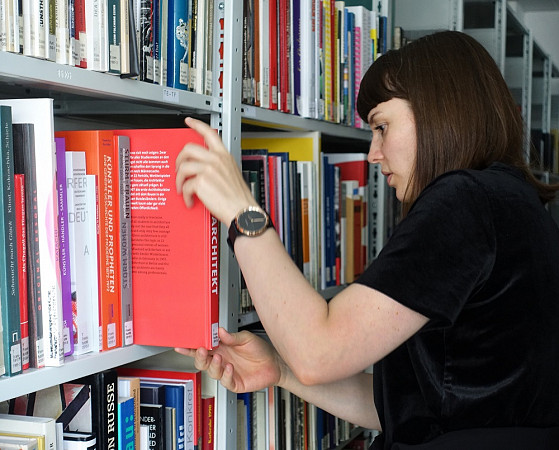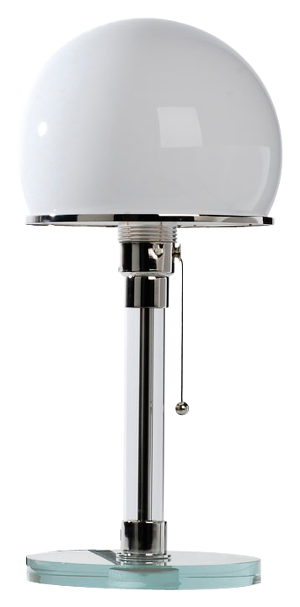
Photo: Erika Babatz
Kristin Bartels, Foto: Erika Babatz
Kristin Bartels
Curator
Kristin, you have been a curator at the Bauhaus-Archiv / Museum of Design for almost exactly a year now. What do you do on a normal working day?
Everyday life at the Bauhaus-Archiv is a little different now that our main museum is closed and we work in interim offices. I'm looking forward to when we can finally move into the new building, with the museum, archive, library and depots all in one place!
Either way, one of my tasks is to take care of the collection together with my colleagues - that means keeping an eye on the areas in which we would like to expand our collection, on what needs to be restored, what might have to be relocated ... Since I haven't been at the Bauhaus-Archiv for that long, I'm still getting to know the areas of our collection I'm responsible for. That's not an easy task considering the amount of objects and documents! I also do a lot of research on the society, art and culture of the Weimar Republic in order to further develop the concept for the presentation of our collection in the new museum building.
My job also includes answering research inquiries and opening exhibitions in which the Bauhaus-Archiv has a part. And of course there's also paperwork to do, like everywhere else.
How did you get interested in the Bauhaus?
My first professional contact with the Bauhaus was the result of some detours. But in retrospect I think that maybe it was meant to be this way all along. I come from Halle/Saale and have known the Bauhaus since my youth, even if I rather associated it with Lyonel Feininger, Burg Giebichenstein and Walter Funkat. I studied art and cultural history in Leipzig and there, at the Museum of Fine Arts, I also started working as a curator. In 2017 I got the chance to curate the exhibition "Bauhaus and America. Experiments in Light and Movement" together with a curator of the State Museum of Art and Culture in Münster. We explored the connection between the visual and performing arts and how, for example, the Bauhaus stage influenced art production in the USA. And now I'm here at the Bauhaus-Archiv where I can work with the world's largest Bauhaus collection!
What role does the collection play in your daily work?
A very big part! As the curator responsible for the visual arts - i.e. painting, sculpture and graphic art - and photography, I'm diving deeper and deeper into the collection all the time and I'm still discovering unknown works. With more than 72,000 photographs alone, you can imagine how much there is to discover. Right now I'm fascinated by photographs by Bauhauslers who are primarily known as visual artists, such as Lyonel Feininger or Georg Muche, or as metal artists, such as Marianne Brandt.
What aspect of your work do you particularly enjoy?
I always love to get involved in different topics, discover new works or new artists. The biographies of Bauhaus students are incredibly exciting and scarcely researched! You simply never stop learning in such an extensive archive. It's also great to be in touch with the families of the Bauhauslers and to discover things that - until now, at least - cannot be found in any book.
You work with the Bauhaus every day. Don't you ever get tired of it?
No! Because the Bauhaus has so many facets, there are always surprises. And we are not limited to the material heritage, either. The questions the Bauhaus raised and the ideas it developed are still relevant today. Living space is becoming scarce again in many places and we have to find solutions to deal responsibly with our finite resources. The question of what role art should and can play in society must also be answered anew for every age. To study the Bauhaus is infinitely stimulating.
